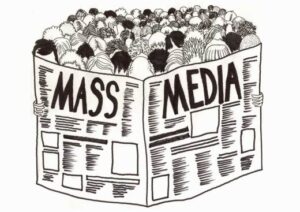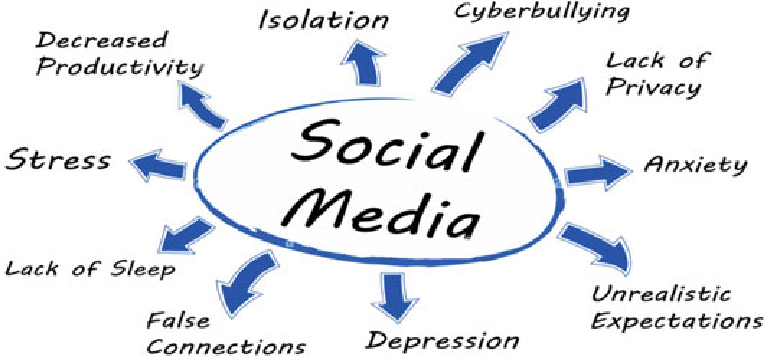沟沟壑壑不包含VB好吧缴纳卡马拉年级很尬发他出发VB
Category: Uncategorized
-
Blog 1 – The Double-Edged Sword: Social Media’s Impact on User Well-Being
Published on: May 13, 2025
People may discuss and share their lives on social media, which is a very participatory platform (Kaplan and Heanlein, 2010). More than a billion people use social media every day, making it a ubiquitous presence in contemporary life (Power, 2014). Social media’s effect on user replication has both major advantages and disadvantages. The advantages and disadvantages frequently rely on the platform’s architecture, the business model’s mode of operation, and the kinds of content and interactions that are promoted.

The social media sites’ designs incite excessive use and have an impact on users’ mental health. The goal of social media businesses’ immersive online environments is to entice users to spend a lot of time there watching ads and enhancing their digital footprints. To comprehend users’ overuse and addiction, for example, certain design elements—such as the “like” button and infinite scrolling—have a significant effect on users’ psychology and behaviour (Montag and Elhai, 2023). Social media addiction is frequently linked to lower levels of happiness and a higher risk of developing depression (Huang, 2022). Users are encouraged to utilise the platform frequently by the push notification and content time restriction features, which cause “fear of missing out” (Alutaybi et al., 2019). According to Holte and Ferraro (2023), design features like colours and reading receipts can divert users’ attention and significantly affect social stress. Through features like “likes,” “infinite scrolling”, and algorithmic recommendations, social media encourages users to use it frequently, which sets off the brain’s reward system and can result in user addiction. Mental health issues like anxiety, depression, and diminished focus are linked to this excessive use.

Social media networks are driven by their advertising-based business model to put profits ahead of the welfare of their users. Some businesses in the attention economy depend on users remaining engaged on the site for extended periods of time. Because users are more likely to be exposed to, be affected by, and engage with adverts the longer they are active and involved on social media platforms, the more money social media businesses will make. Because of this, social media businesses charge higher prices for advertisements (Lanier, 2018; Price, 2018). Social media’s economic model has a strong incentive mechanism that pushes users to spend a lot of time online, which indicates that many individuals may eventually develop an addiction (Alter, 2017; Price, 2018). Addicts will unavoidably spend less time learning, working, sleeping, taking care of themselves, and socializing with friends and family as they spend more and more time on social media. According to research, addicts are more likely to experience anxiety and depression the more time they spend online (Bhargava and Velasquez, 2021) . Digital platforms with advertising-based business models have an incentive to put revenues ahead of the welfare of its users. Users’ willingness to spend more time online determines how much money they make. Therefore, regardless of its effect on authenticity or mental health, they deploy algorithms to push interesting and frequently addicting content. Additionally, this strategy depends heavily on data collection, which presents significant privacy concerns. As a result, users will experience detrimental effects like anxiety, addiction, and being exposed to misleading information. In the end, these platforms are motivated to use attention rather than safeguard users, which puts corporate objectives and the general welfare at odds.
Social media promotion of material has the potential to both benefit and hurt users’ interests. According to studies, those who have seen “body positivity” posts report feeling happier and more satisfied with their bodies. Both “body positivity” and “body neutrality” blogs emphasise different facets of a positive body image, encouraging people to embrace the roles that their bodies play. Accept bodies of all shapes and sizes and love the way your body looks (Smith et al., 2023). According to the Ladwig et al. study, articles that promote idealised body images—particularly the ideal of a slender and strong figure—are typically referred to as “fitness inspiration” content. Regardless of whether they suffered from eating disorders or tremors, women who were exposed to “fitness inspiration” photos all displayed increased levels of negative emotional reactions and physical dissatisfaction. It suggests that users’ worry over body form and self-comparison is inadvertently heightened by this type of content. Users of social media are exposed to a vast array of content, some of which may have entirely distinct psychological impacts. Positive knowledge can empower users, improve their learning and self-acceptance skills, and stimulate their physical and emotional well-being. Content that propagates detrimental health cultures, unattainable beauty standards, or misleading information might polarise beliefs, lower users’ self-esteem, or exacerbate anxiety. Therefore, on social media platforms, the same post could have both benefits and drawbacks.
In conclusion, social media’s effect on users’ well-being varies depending on the platform’s revenue strategy, design philosophy, and advertising content. Platforms powered by advertisements frequently put user engagement ahead of user health, which encourages the spread of dangerous content and addictive features. On the other hand, positive content on social media can also inspire users. The choice of platform and users’ level of digital literacy determine how a platform affects wellbeing. Promoting a healthy digital environment depends heavily on the platform’s ethical design and regulation.
-
Blog 3
Imagine you are an activist for a social movement. Describe how you would use digital media to promote your cause, backing up your choices with information from the required readings, the suggested readings, and high-quality sources you find on your own.
-
Blog 3
Imagine you are an activist for a social movement. Describe how you would use digital media to promote your cause, backing up your choices with information from the required readings, the suggested readings, and high-quality sources you find on your own.

